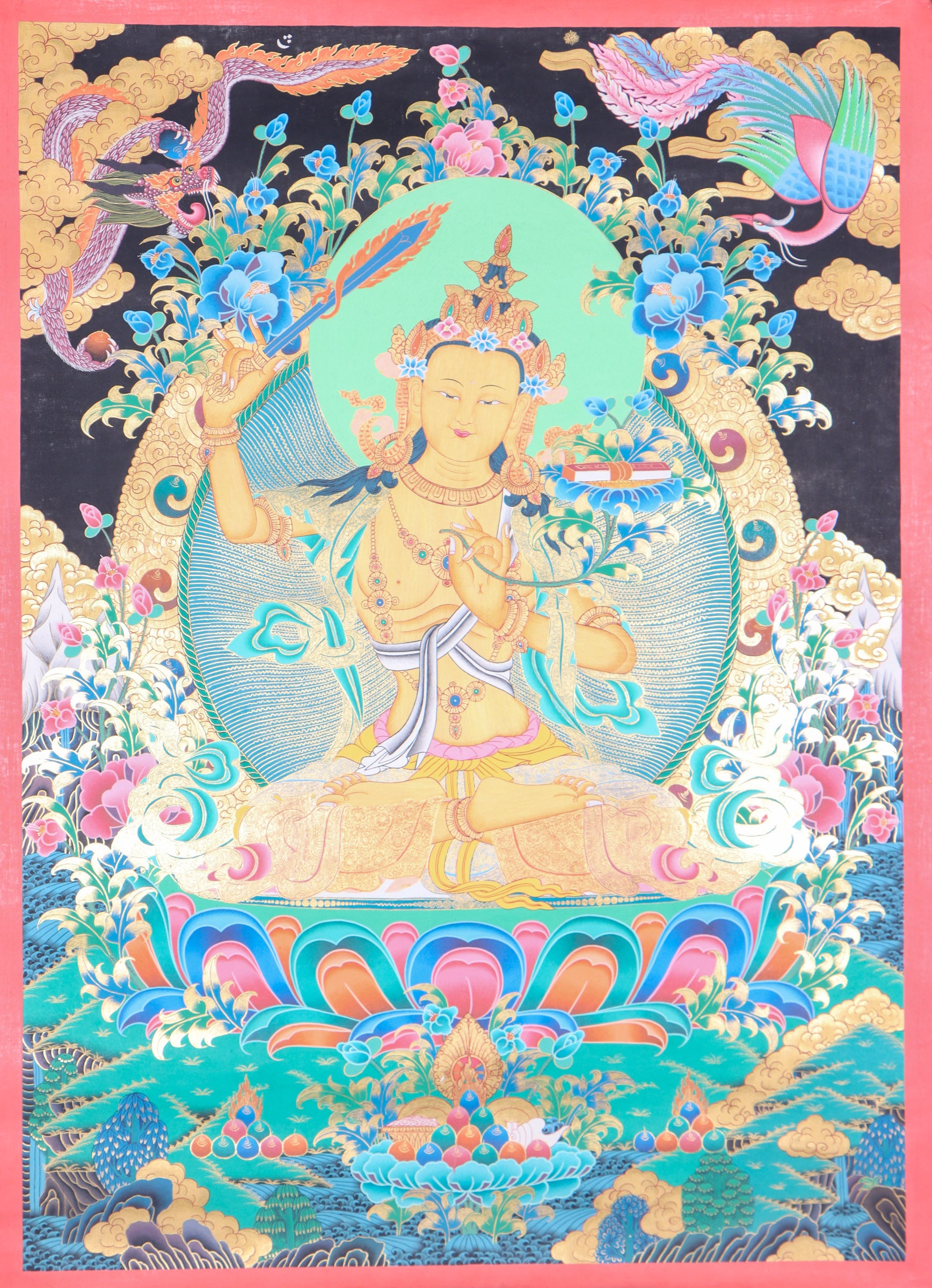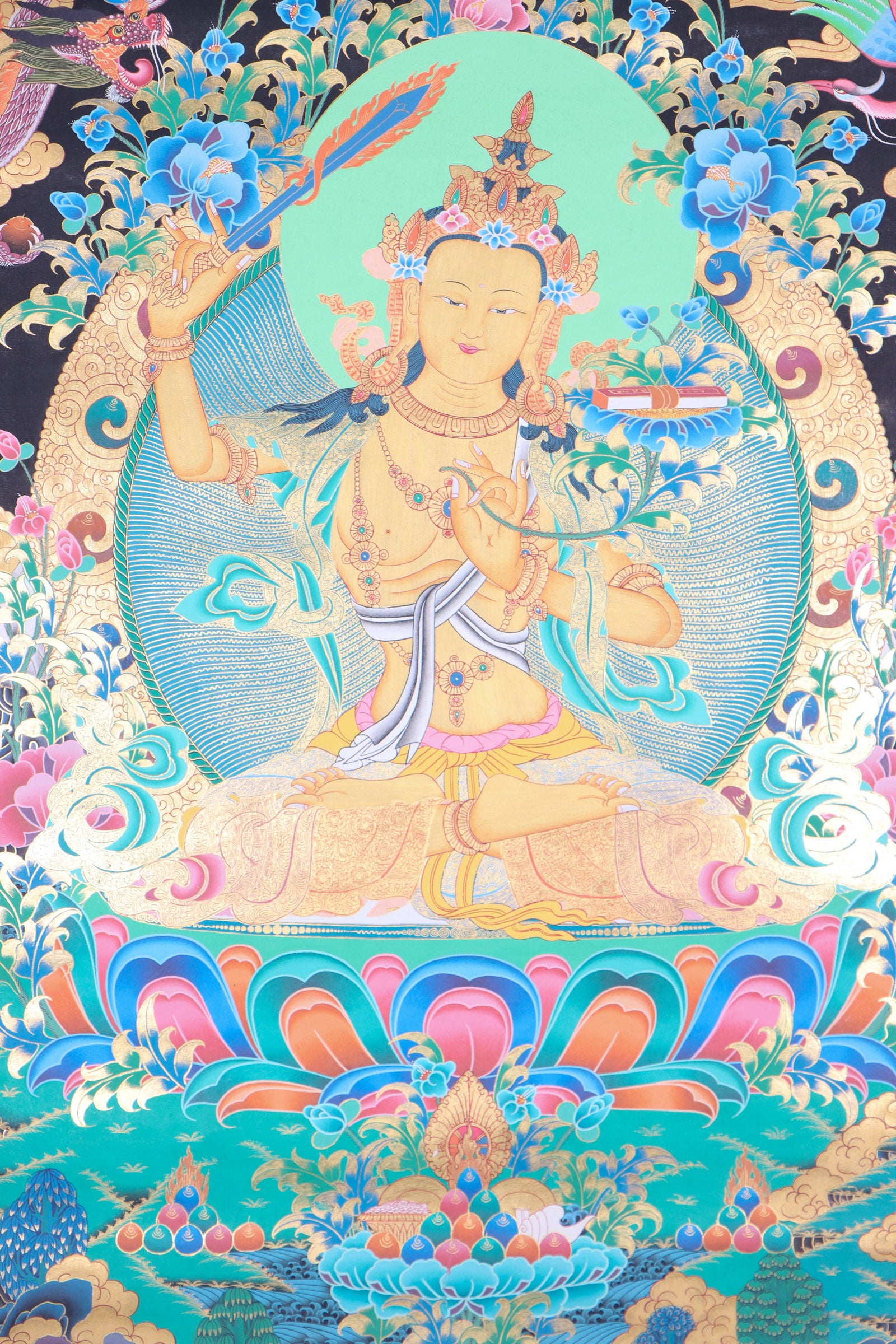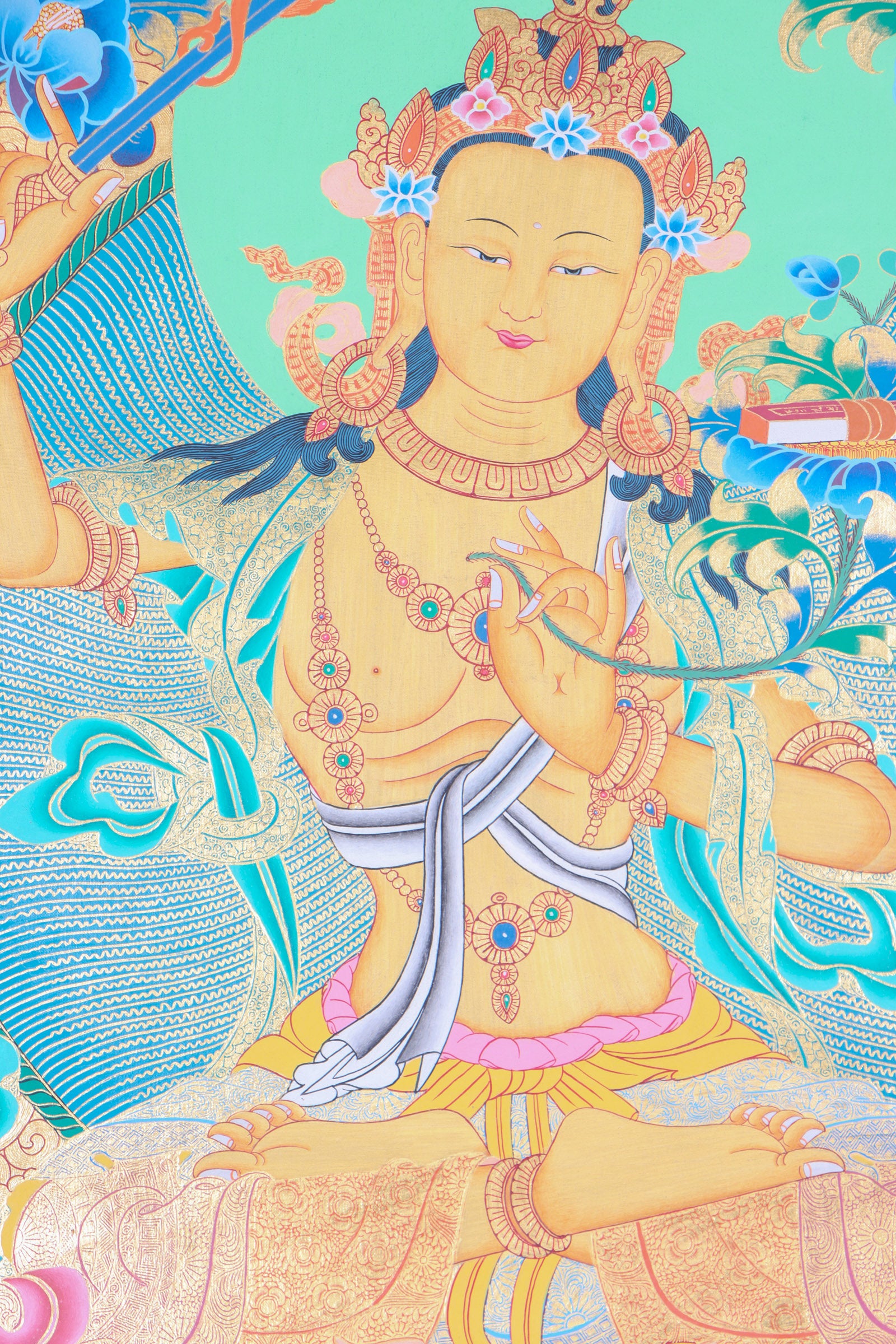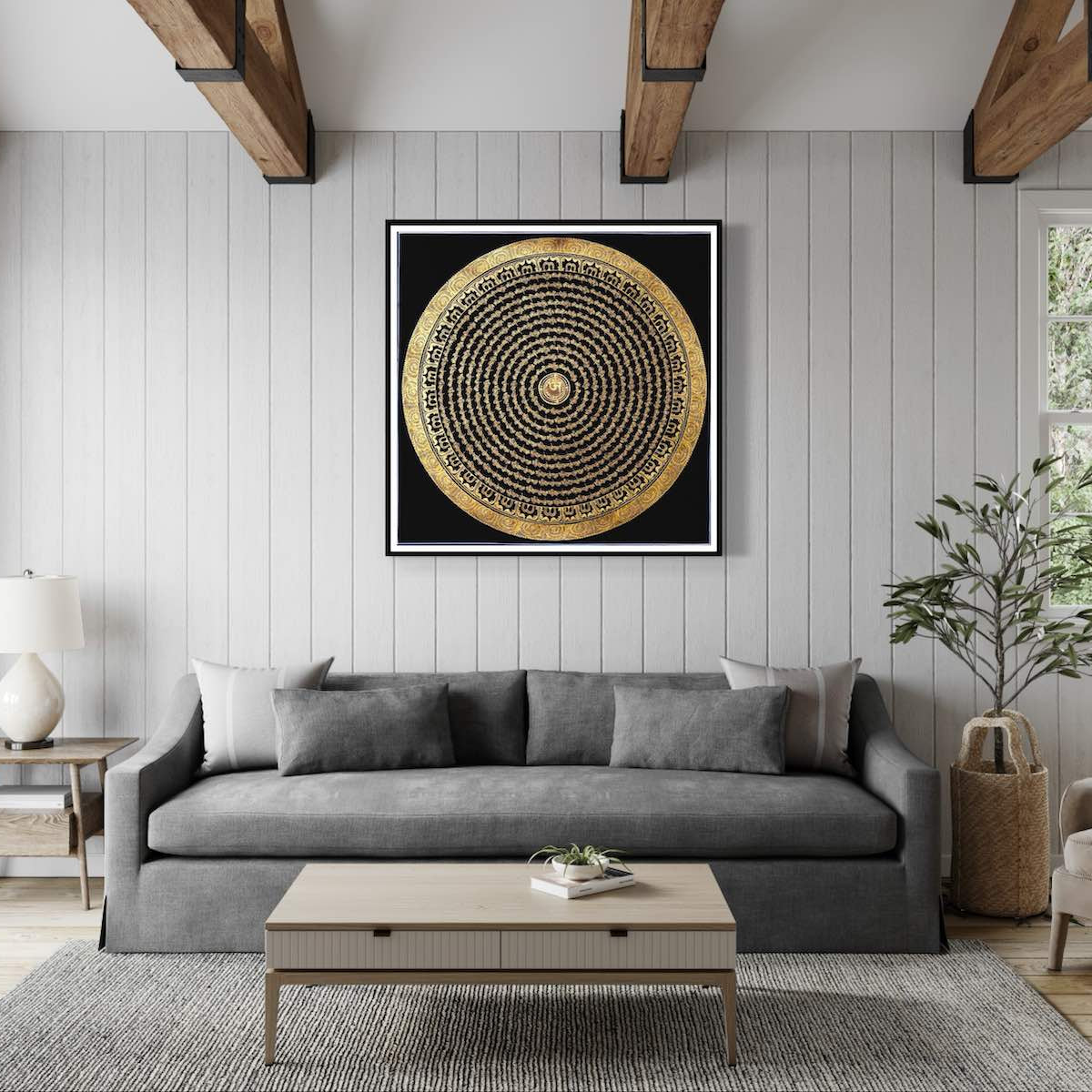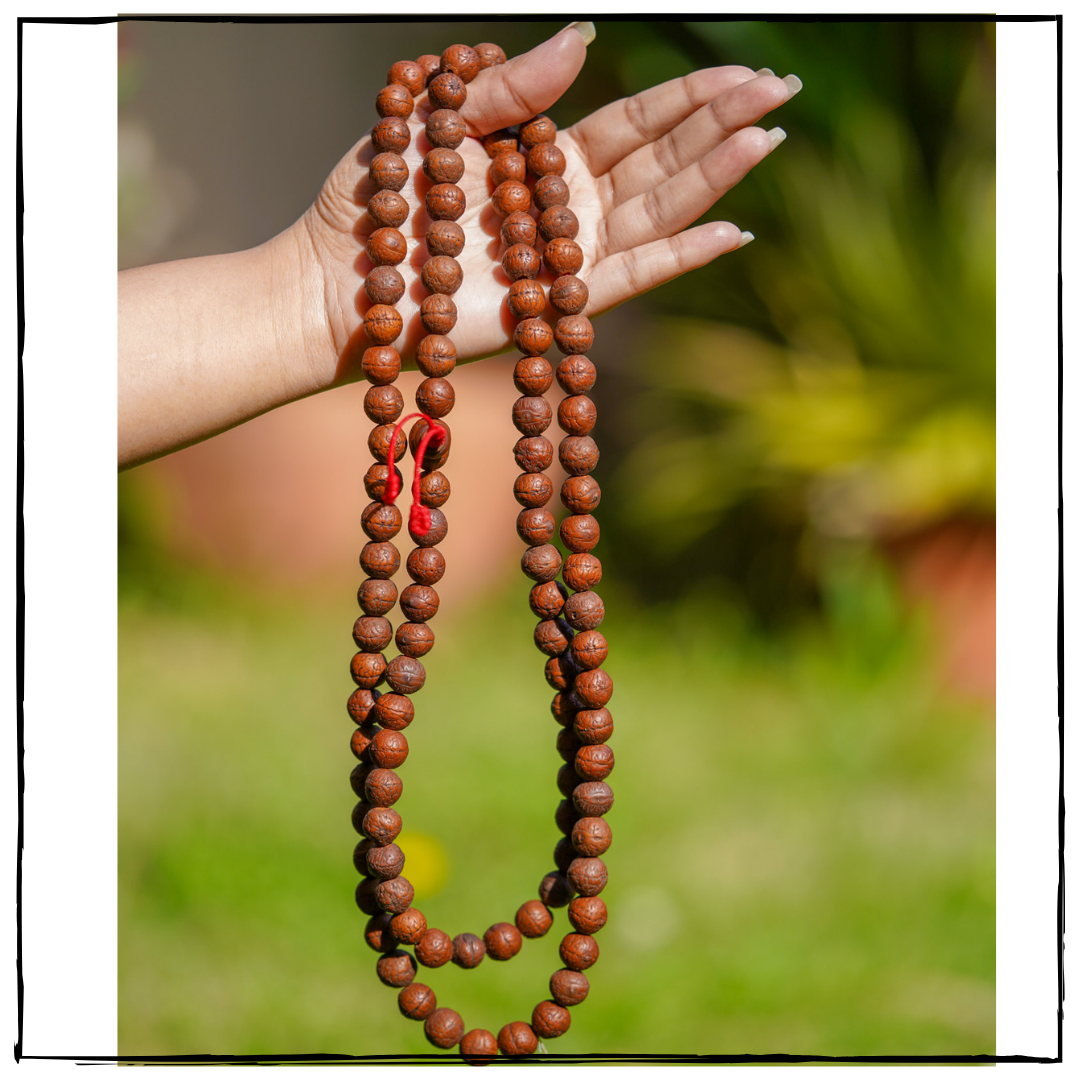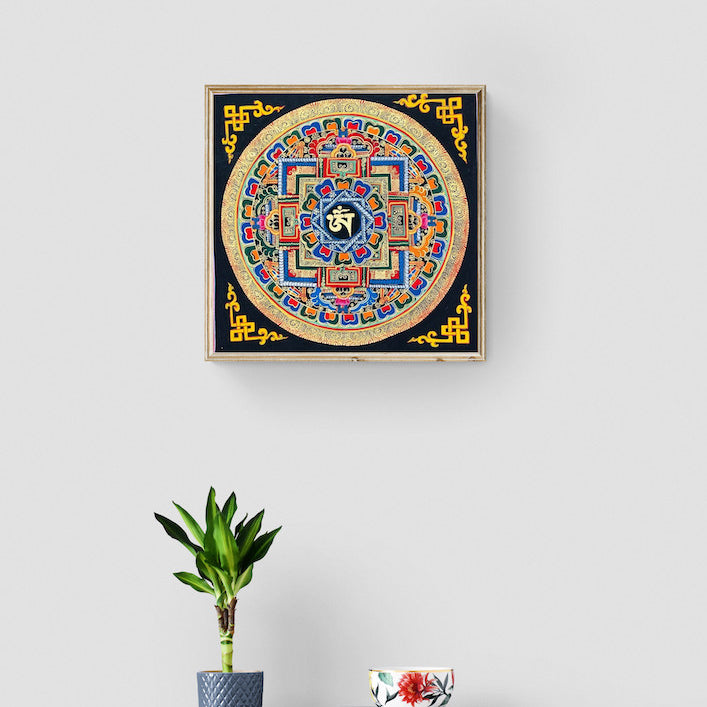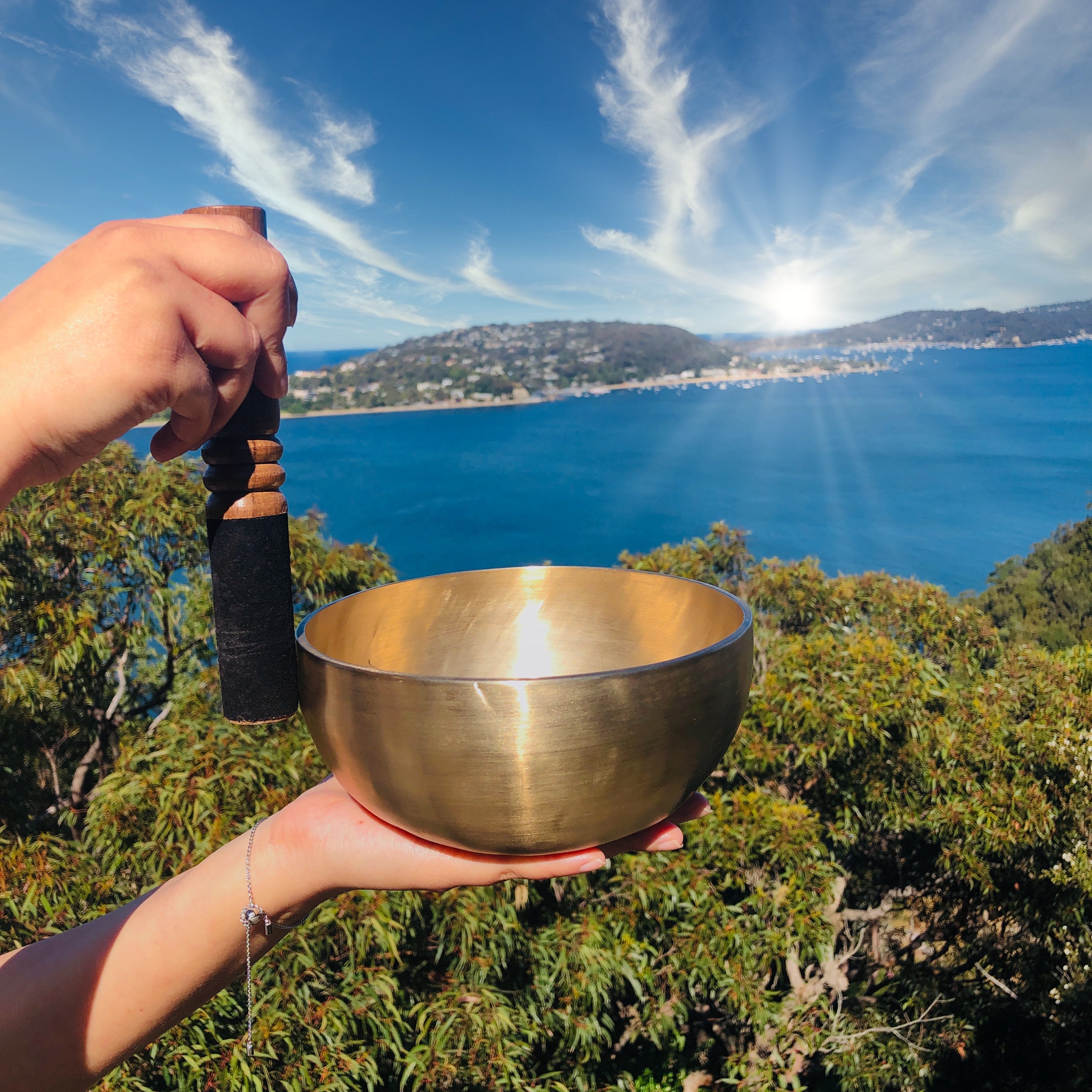Manjushri Thangka Painting
Couldn't load pickup availability
Description
Thangkas are elaborate, symbolic paintings usually depicting religious or spiritual figures. Created on fabric, these pictures serve as visual meditations, helping practitioners deepen their devotion and comprehension of Buddhist principles. Exquisitely detailed and colorful, Thangkas are renowned for their iconography.
Manjushri Thangka Painting is an intricate scroll painting, traditional to Tibetan Buddhism, that depicts the wisdom-filled bodhisattva, Manjushri. These art pieces are paramount in Buddhist ceremonies, providing visual aides for meditation, teaching, and religious rituals. Manjushri is often portrayed as a youthful figure, bearing a sword and a book - the sword symbolizing the cutting of ignorance and the book embodying knowledge.
Manjushri is portrayed seated in a meditative pose upon a lotus throne with a glowing halo around his figure. His right hand holds a sword that represents his insight in eliminating misunderstanding and ignorance. He grasps a book or scroll in his left hand to shed light on his wisdom. Additionally, the painting is usually accentuated with symbolic elements like lotus blossoms, divine beings and an ornamental backdrop which all signify Manjushri's abilities and lessons.
Product Specification:
- Hand Painted
- Materials: Semi-Precious Natural Minerals
- Base: Cotton Canvas
- Origination: Nepal

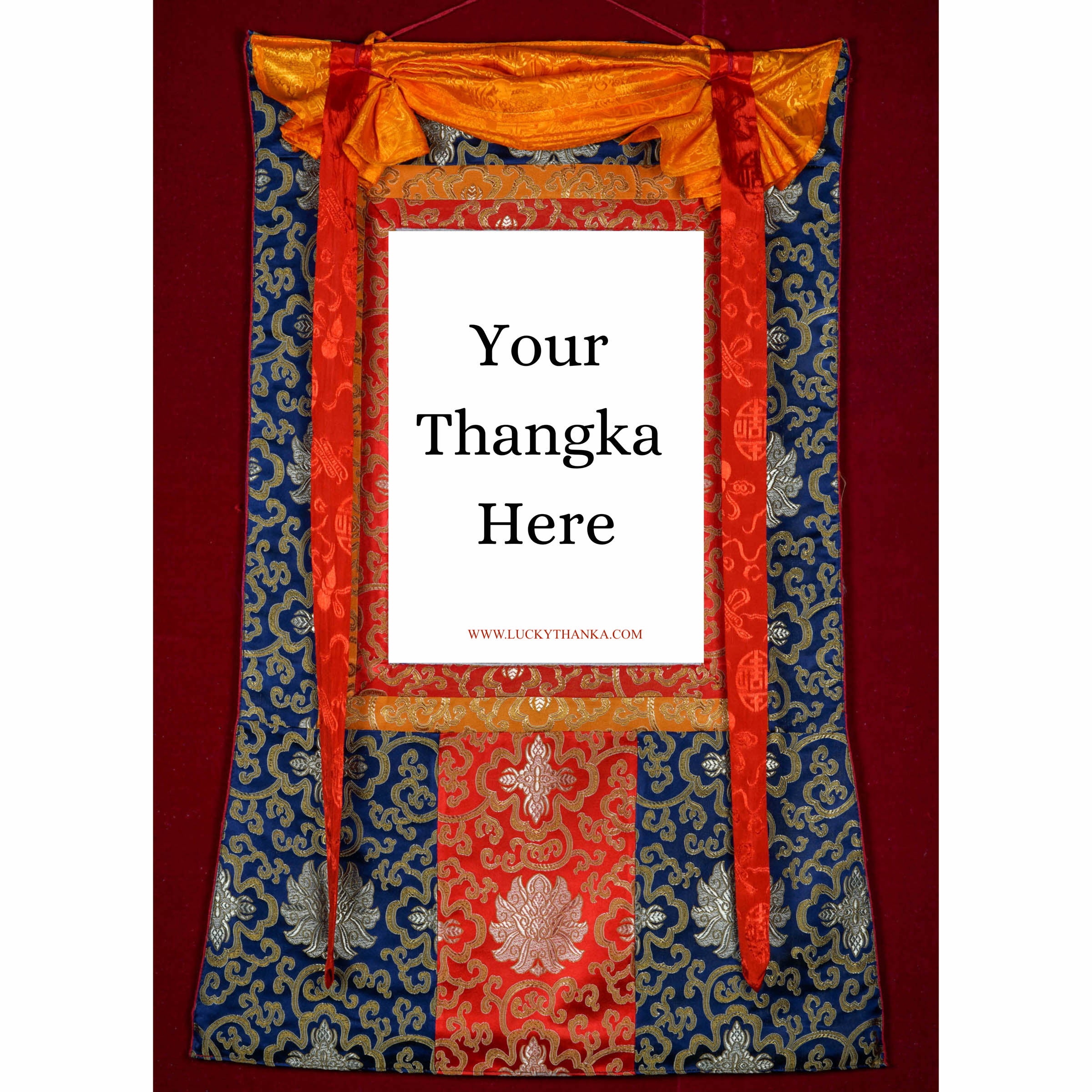
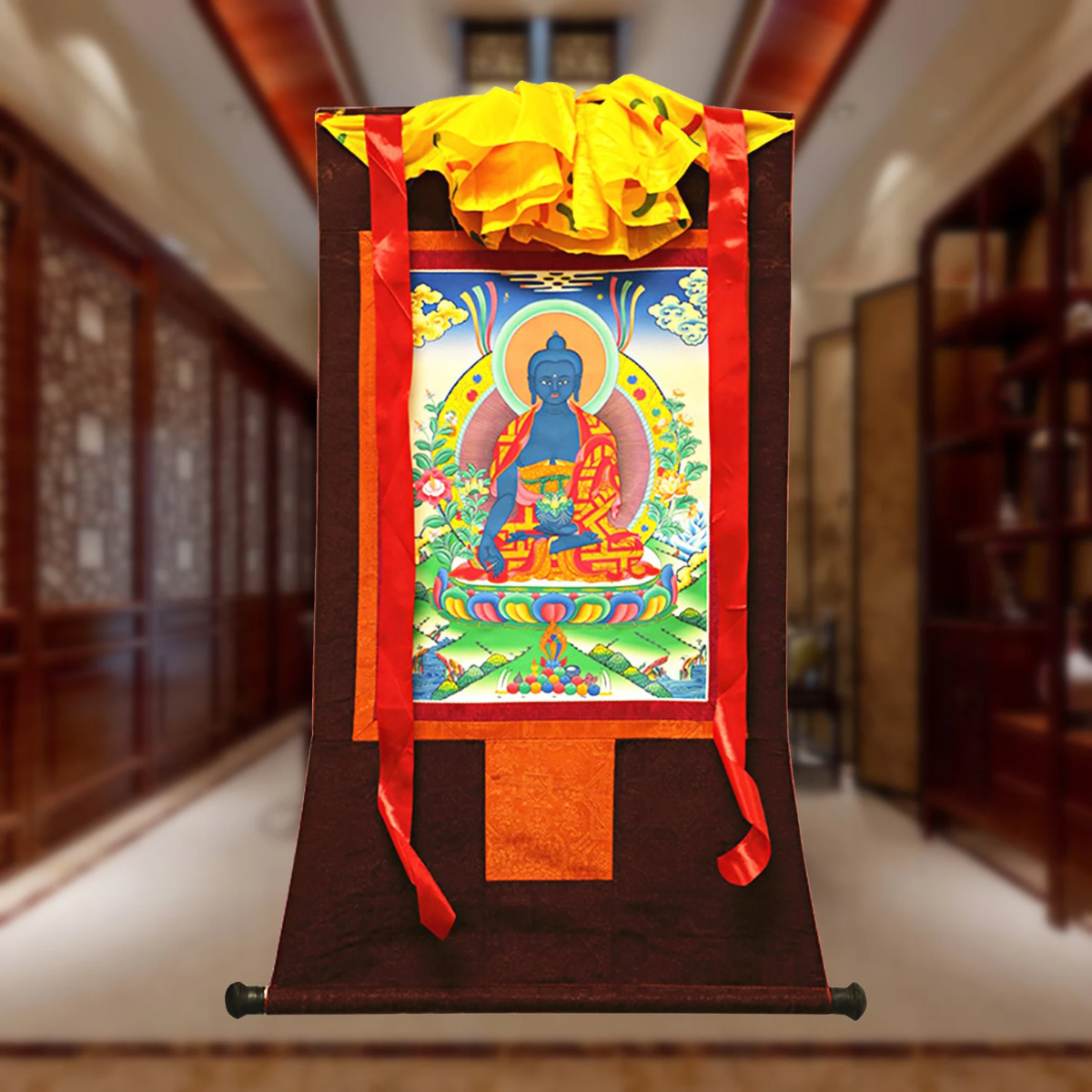
Hand Embroidery Brocade
Want to add a Brocade to your beautiful Thangka Painting? Traditional Style Brocade has been one of the most popular form of mounting as it has a greater religious merit.
Note: Make sure you have added the Thangka to your cart first.
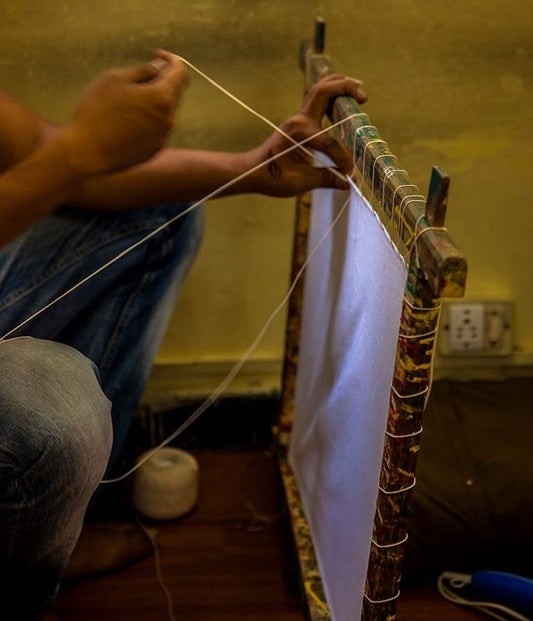
100% Cotton Canvas
Preparing the Cotton canvas before starting to paint a Thangka. This process includes washing, drying, stretching, sizing and everything needed to make a perfect base for the thangka to last for centuries.
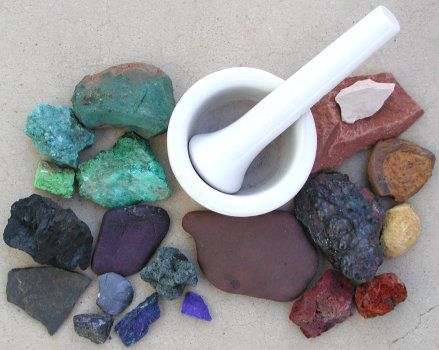
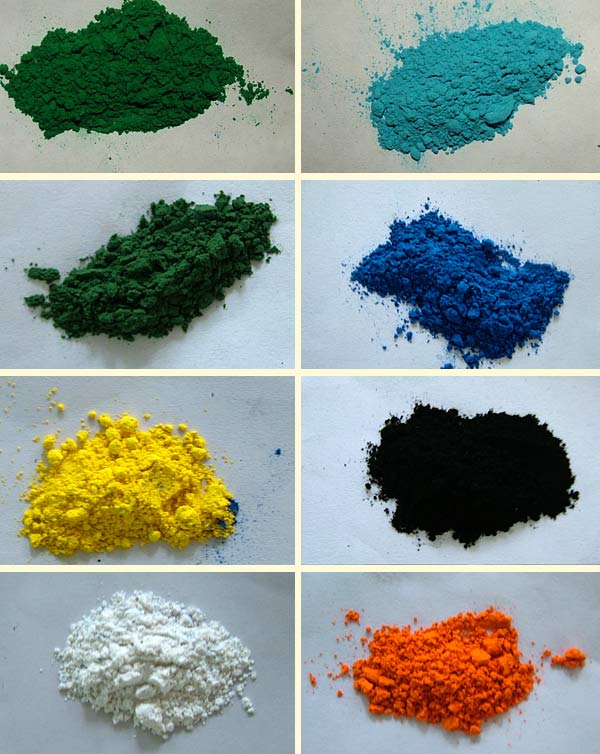
Natural Minerals
Thangka Paintings are painted using the natural minerals. These are firstly grind into the powder form and then used in the thangka as a paint.



